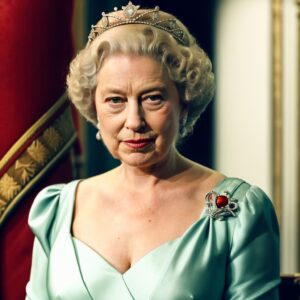1952 was a year of profound change for the British monarchy, marking the end of one era and the beginning of another. On February 6th, King George VI passed away in his sleep at Sandringham House, plunging the United Kingdom into mourning. His eldest daughter, the 25-year-old Princess Elizabeth, was in Kenya at the time, fulfilling royal duties when she received the life-altering news. Without ceremony or hesitation, she became Queen Elizabeth II, embarking on a reign that would ultimately define modern Britain.
The transition was swift yet deeply emotional. The young queen had lost her father, a man beloved for his quiet strength during World War II, and she was now tasked with leading an empire still recovering from the war’s devastation. Her journey home to Britain was not just a return to her country but the start of a lifelong duty to the crown. As she stepped off the plane, draped in black mourning attire, she was no longer just Elizabeth Windsor—she was the sovereign of the United Kingdom.
Her ascension signaled a new chapter for the monarchy. With the decline of the British Empire and the rise of the Commonwealth, Elizabeth’s role would demand diplomacy, resilience, and adaptability. Though her coronation would not take place until 1953, the weight of the crown was already upon her shoulders. From the moment she took her oath, Queen Elizabeth II embraced her duty with unwavering commitment, becoming a steady figure in a rapidly changing world.
Her reign, which would go on to become the longest in British history, began with the echoes of her father’s legacy and the hopes of a nation looking toward the future. In 1952, the world did not yet know what kind of monarch she would become, but her quiet strength and deep sense of responsibility were already evident. It was the beginning of a new era, one that would span decades and redefine the role of the British monarchy in the modern age.

